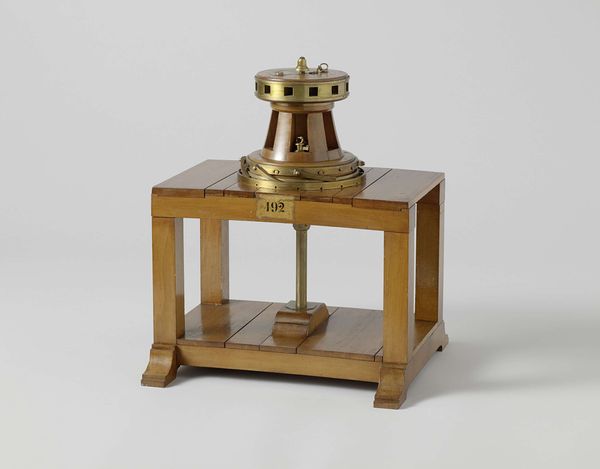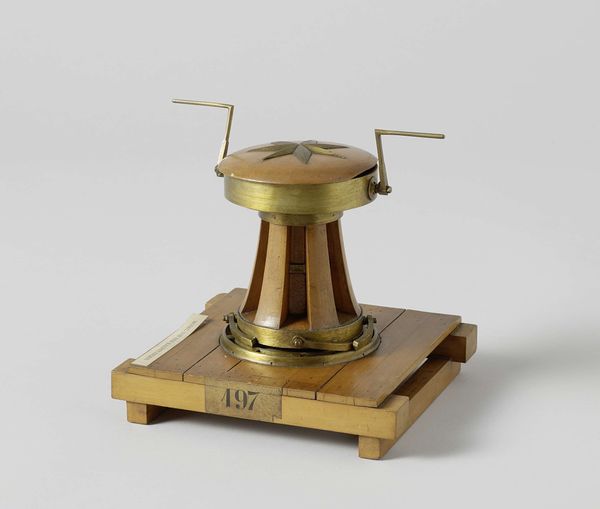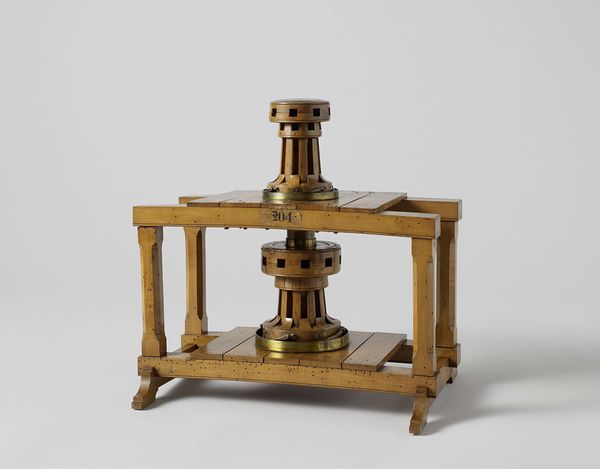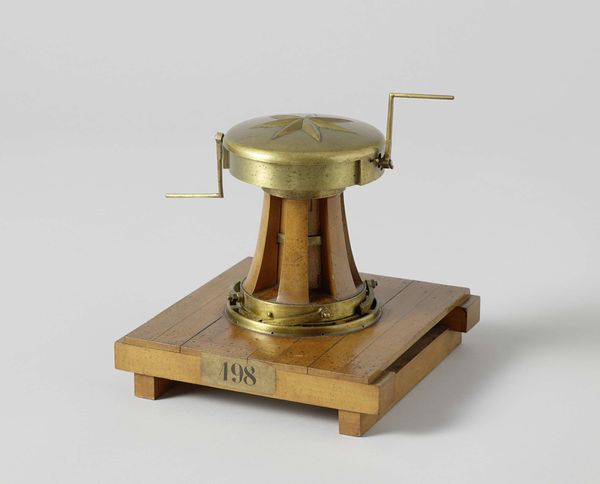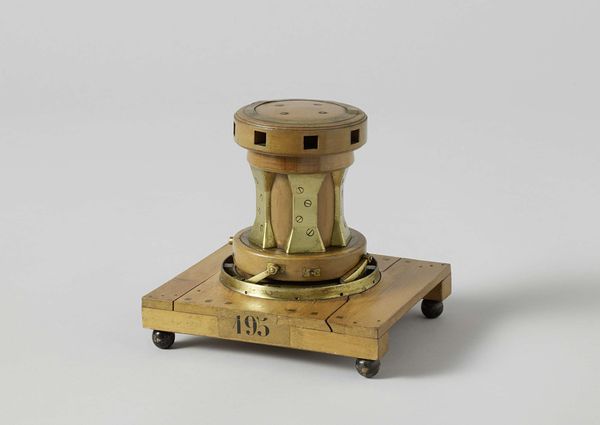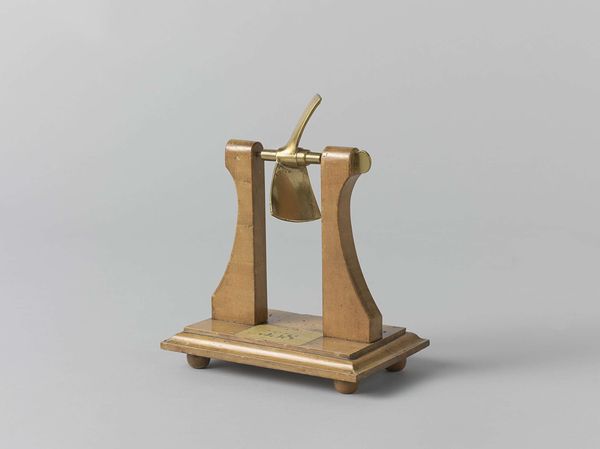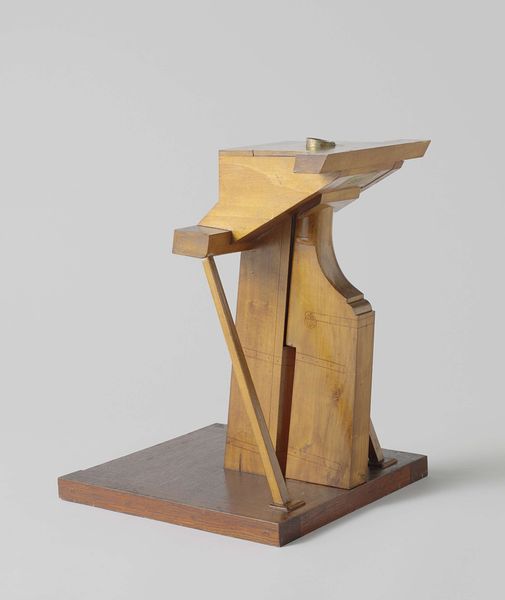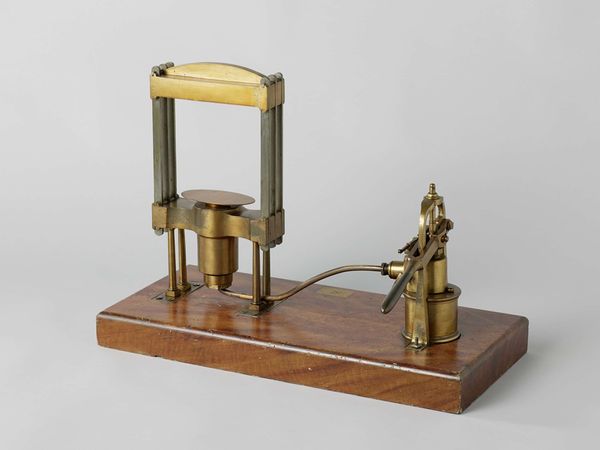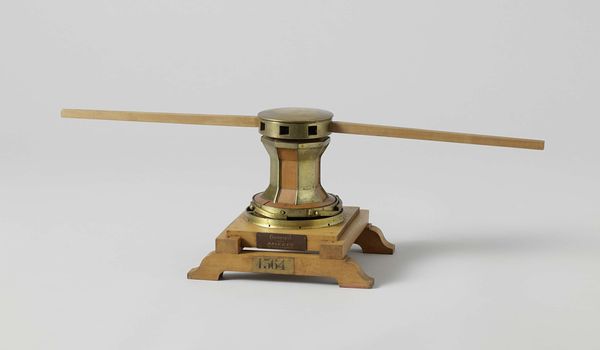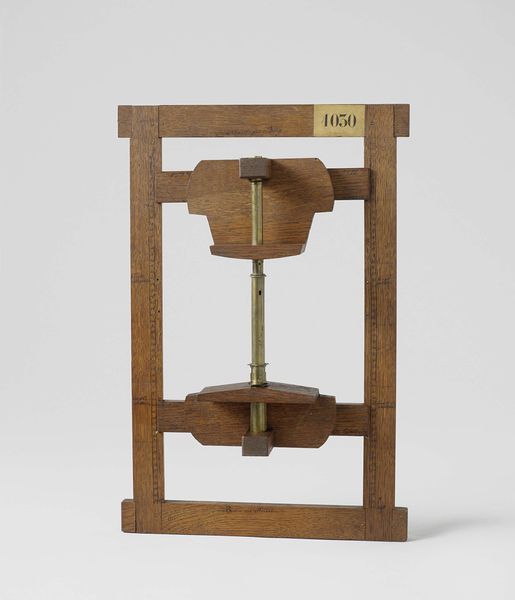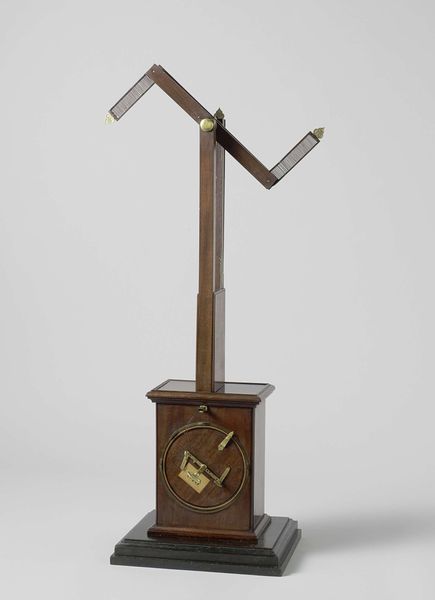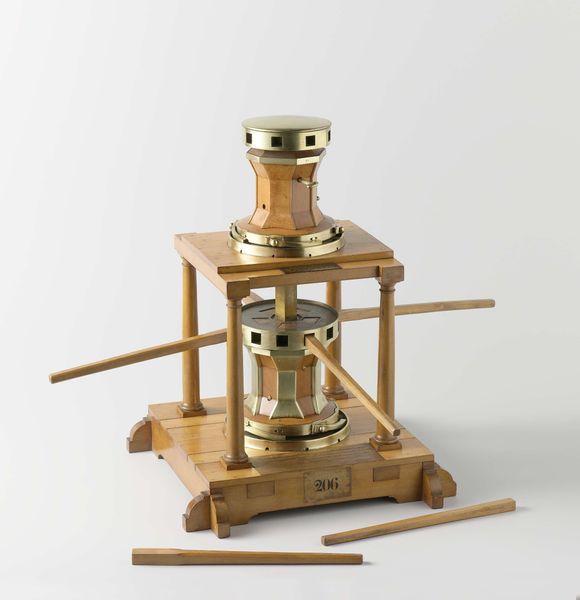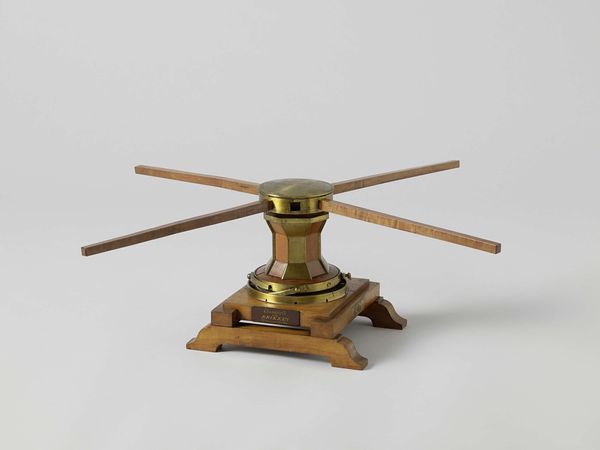
brass, carving, metal, sculpture, wood
#
brass
#
carving
#
metal
#
sculpture
#
geometric
#
sculpture
#
wood
Dimensions: model height 38.5 cm, model width 27.6 cm, model depth 27.2 cm, packaging capsule height 42.5 cm, packaging capsule width 30.5 cm, packaging capsule depth 30.5 cm
Copyright: Rijks Museum: Open Domain
Editor: This is the "Model of a Capstan with a Winch," crafted around 1842 by the Rijkswerf Rotterdam, using wood, brass, and other metals. I'm immediately struck by how it resembles a miniature monument, elevating what I understand is a utilitarian device. What do you see in this piece? Curator: I see a powerful commentary on the era’s fascination with technology and empire. The Rijkswerf Rotterdam was a key player in building and maintaining the Dutch fleet. The very act of creating such an elaborate model speaks to the prestige associated with naval power. The classical columns supporting the winch mechanism elevates labor. Does it not appear almost sacred? Editor: It does! Like a temple to industry. Why go to such lengths for a model? Was it common? Curator: Absolutely. These weren't merely instruction manuals; they were displays of national pride and engineering prowess. Consider the social and economic forces at play. The Netherlands, like other European powers, was heavily invested in maritime trade and colonial expansion. These models were shown at trade shows, institutions of learning, and likely government meetings, reinforcing national identity and legitimizing the state’s investment in maritime technology. The choice of brass and finely carved wood suggests an aspirational audience too, would you agree? Editor: Definitely. It’s as though the model itself is a form of propaganda. Curator: Precisely! It’s a celebration of Dutch ingenuity and dominance on the seas. Thinking about its place within society helps us grasp its multifaceted role. The classical influence also shows a desire to be considered cultured and enduring. The state wants the population to think it is both, using visual media, like we still do! What are your thoughts now? Editor: I hadn't considered how much this model reflects the cultural ambitions of the Dutch state. I see it as so much more than just a functional object. Curator: Exactly, viewing art through its social context reveals a wealth of meanings that might otherwise remain hidden.
Comments
No comments
Be the first to comment and join the conversation on the ultimate creative platform.
